Noodle W Stewed Beef in Soybean Paste
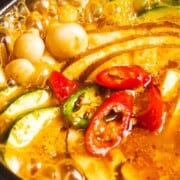

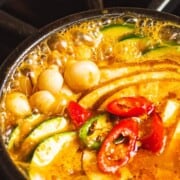

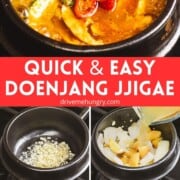
Doenjang jjigae (된장찌개) is an easy Korean soybean paste stew made of doenjang, anchovy stock, any protein of choice, tofu, potatoes, mushrooms, and zucchini. It's mainly flavored with doenjang, a delicious fermented Korean soybean paste that's full of umami flavor.
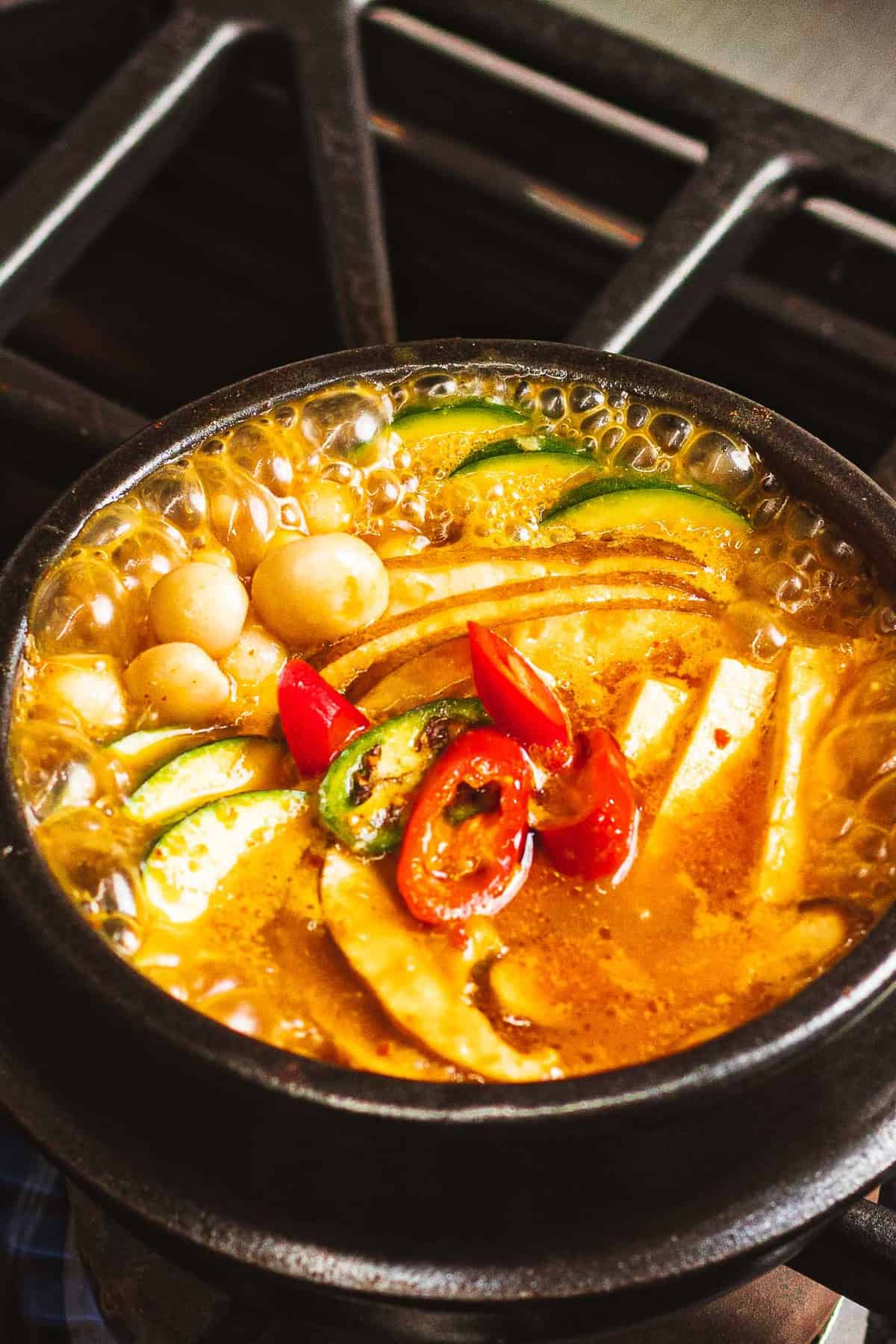
Doenjang jjigae (된장찌개) is a savory, umami-filled Korean stew made with Korean soybean paste called doenjang, vegetables, and protein of choice (beef, shrimp, clams, tofu, pork). It's also called Korean soybean paste stew, soybean stew, Korean miso stew, or soybean paste stew.
Its flavor is similar to Japanese miso but with more intense, rich, savory flavor. If you like miso soup, you'll love doenjang jjigae! It's a hearty Korean stew that's easy to make, healthy, satisfying, and full of vegetables and protein.
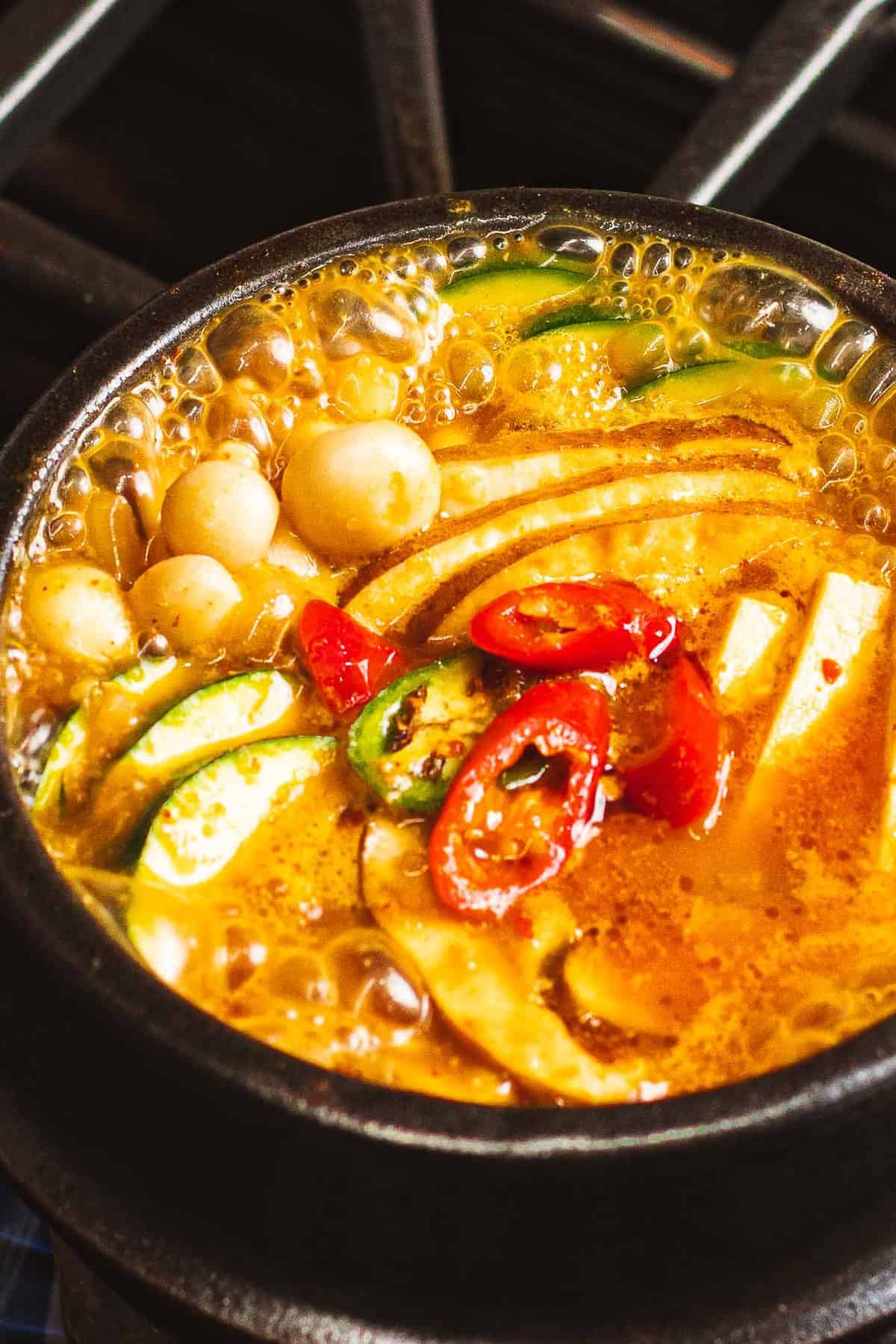
What is doenjang (soybean paste)?
Doenjang (된장) is a fermented Korean soybean paste made of soybeans boiled in a salt water brine. It's pounded, aged, and fermented until rich, umami flavors are developed.
Doenjang jjigae (된장찌개) is a delicious stew that's made by adding doenjang to stock with a variety of vegetables and meat.
There are several types of doenjang which vary with the ingredients used. For soups and stews like doenjang jjiage, I recommend using seasoned doenjang (조미된장) which includes ingredients like garlic, onion, and shellfish flavors to create a rich, umami broth.
If you can't find seasoned doenjang, you can supplement with anchovy stock or chicken stock and be sure to include garlic and onions to add more flavor.
Ingredients
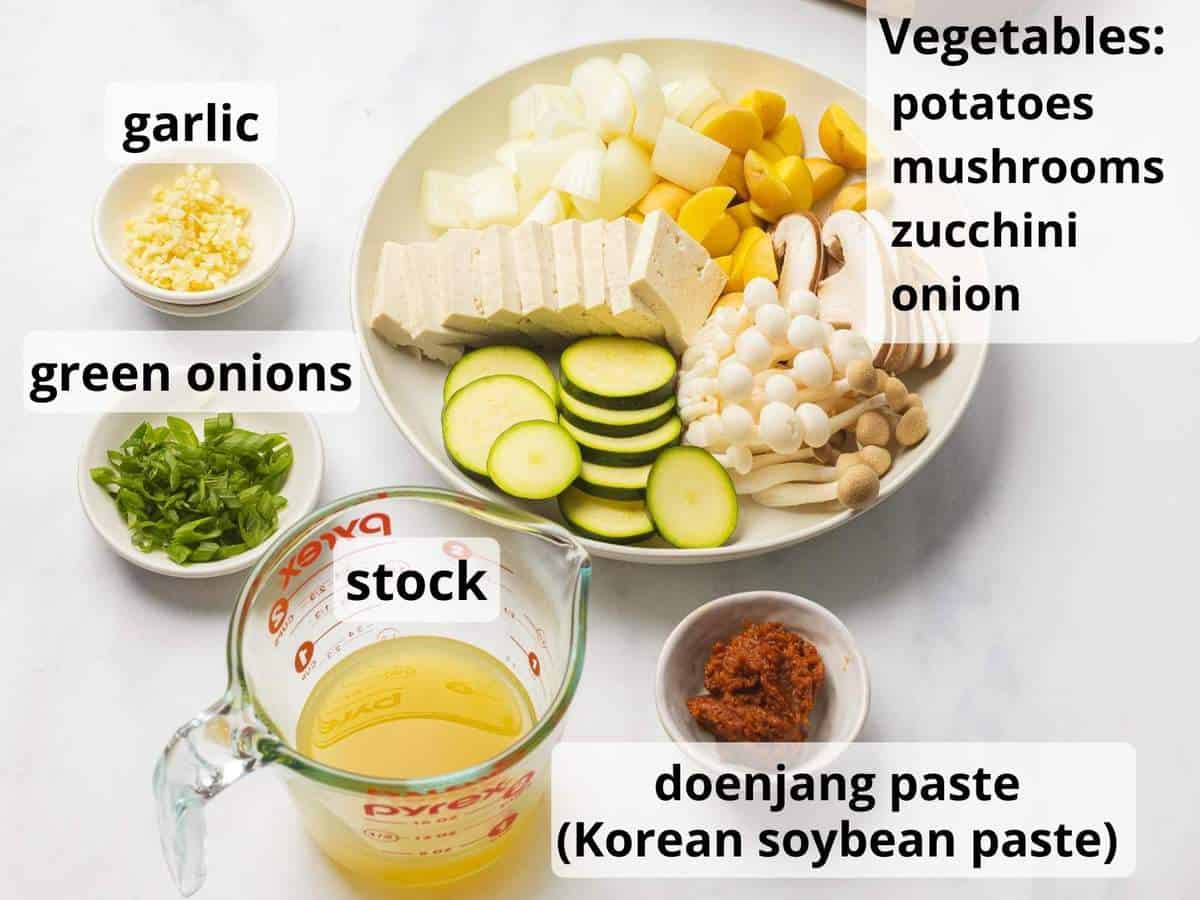
- Doenjang - A delicious fermented Korean soybean paste found in Korean and most Asian grocery stores. They are shelf stable when unopened so look in the sauce or seasoning aisle.
- Stock - Anchovy stock is traditionally used but chicken, beef, or vegetable stock works too.
- Vegetables - I used mushrooms, onions, potatoes, and zucchini.
- Protein - Use tofu, beef, clams, shrimp, or pork.
How to Make Doenjang Jjigae
- Saute garlic in oil until fragrant then add potatoes, onions, stock, and any meat (if using).
- Boil for 3 to 5 minutes.

- Add the doenjang paste, tofu, and vegetables.
- Stir to completely dissolve the doenjang and cook until the meat and potatoes are cooked through.
- Taste and season accordingly. Garnish with peppers and serve!
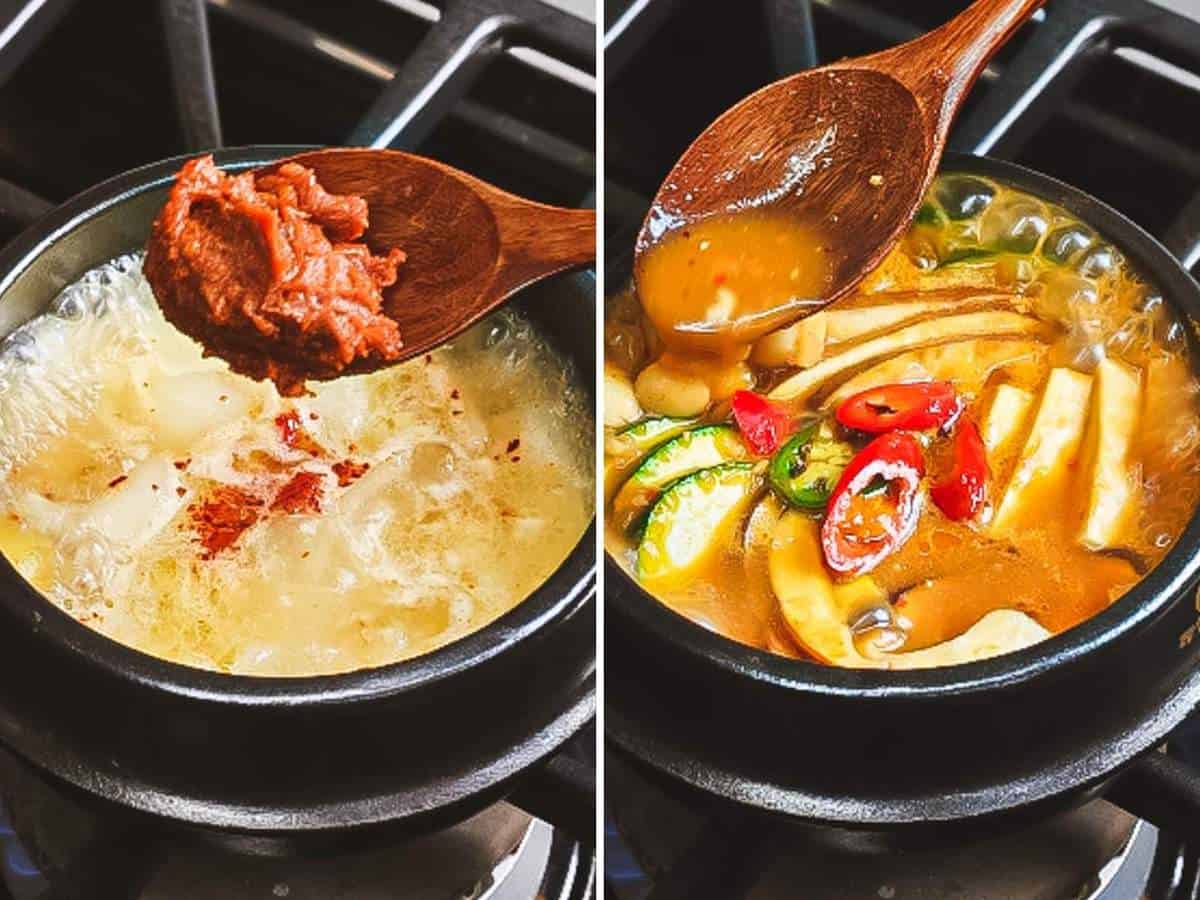
Doenjang jjigae is best when served hot and still boiling at the table. Traditionally it's served in earthenware pots because they hold heat very well. Serve with fresh steamed rice and banchan (Korean side dishes). Enjoy!

Variations & Substitutions
Vegan and vegetarian doenjang jjigae: Use vegetable broth or vegan dashi and vegan doenjang paste. Check the ingredients that no shellfish or seafood has been added as it's common in seasoned doenjang. Add lots of mushrooms for umami flavor and tofu for protein.
Seafood doenjang jjigae: Add clams, shrimp, or crab as the protein and use anchovy broth.
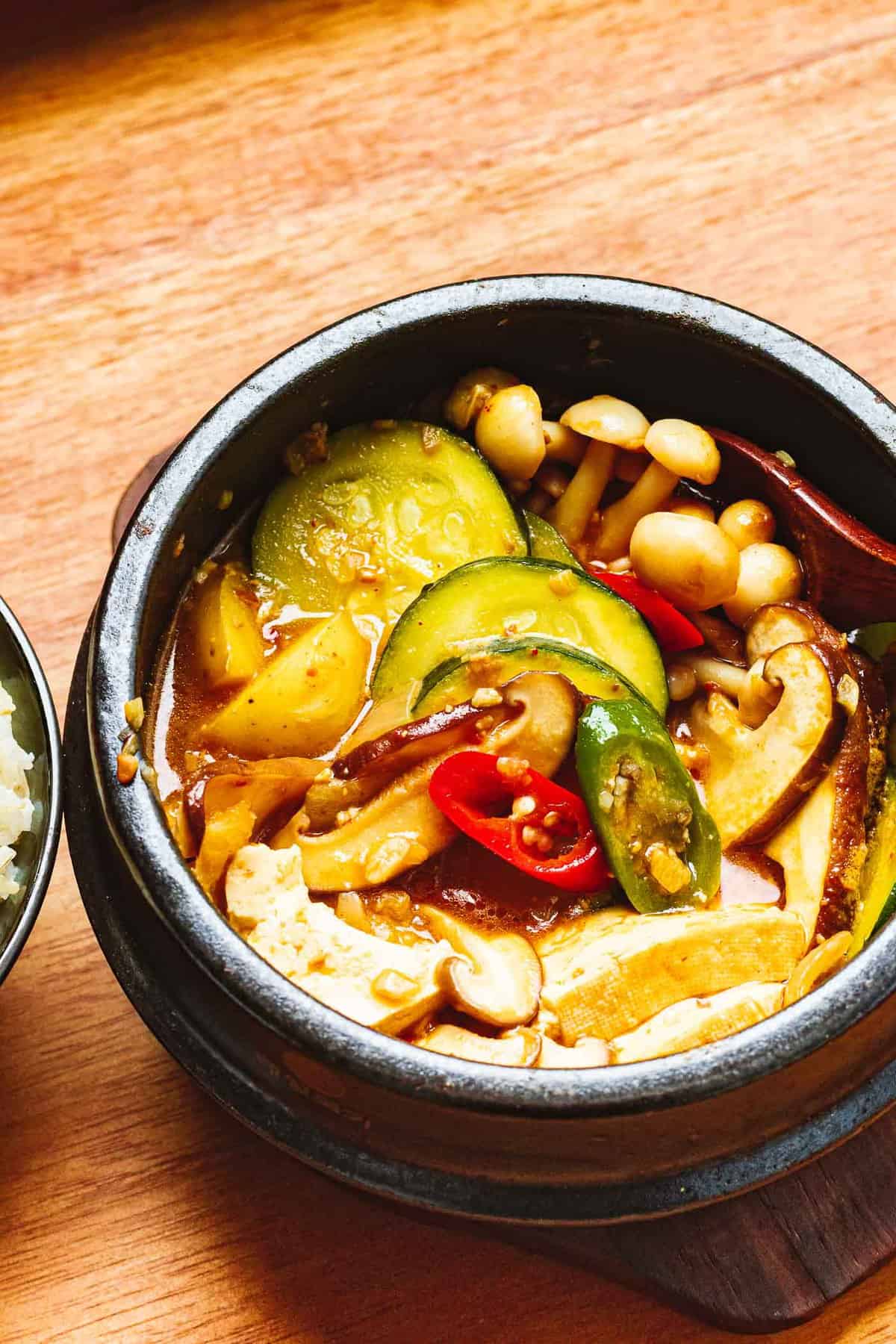
Serve with Korean side dishes (banchan):
-
Spicy Korean Cucumber Salad (Oi Muchim)
-
Korean Potato Side Dish - Gamja Jorim
-
Korean Soybean Sprout Side Dish - Kongnamul Muchim
-
Spicy Korean Radish Salad | Musaengchae
-
Korean Shiitake Mushroom Side Dish
-
Crunchy Korean Pickled Radish - Fast and Easy!
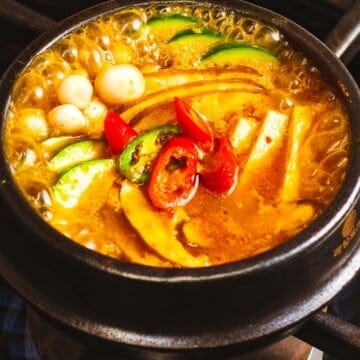
Doenjang Jjigae (Korean Soybean Paste Stew)
Doenjang jjigae (된장찌개) is a Korean soybean paste stew made with protein of choice, tofu, potatoes, mushrooms, and zucchini. It's flavored with doenjang, a delicious fermented Korean soybean paste that's full of umami flavor.
Pin Print
Course dinner, entree, Main Course
Cuisine Asian, Korean
Doenjang Soup Base
- 1 cup stock - See Note 1
- 1 Tablespoon doenjang paste - (seasoned) See Note 2
- 1 Tablespoon vegetable oil
- ½ teaspoon Korean red pepper flakes - (optional)
- 4 cloves garlic - minced
Vegetables & Protein
- ⅓ cup potatoes - diced
- ⅓ cup zucchini - diced
- ⅓ cup onions - diced
- ⅓ cup mushrooms - sliced
- ⅓ cup protein of choice (tofu, meat, seafood) - bite size pieces
- 1 red or green pepper - (optional) chopped
Prevent your screen from going dark
-
Soup Base: In a small pot or earthenware pot, saute garlic with vegetable oil until fragrant. Next add the stock, potatoes, onions, and meat or seafood (if using). Boil for 3 to 5 minutes.
1 Tablespoon vegetable oil, 4 cloves garlic, ⅓ cup potatoes, ⅓ cup onions, 1 cup stock
-
Add doenjang and veggies: Add doenjang paste, zucchini, mushrooms, tofu (if using), and Korean red pepper flakes (if using). Stir until doenjang paste is fully dissolved. Boil until potatoes and protein are fully cooked, about 3 to 5 minutes.
1 Tablespoon doenjang paste, ⅓ cup zucchini, ⅓ cup mushrooms, ⅓ cup protein of choice (tofu, meat, seafood), ½ teaspoon Korean red pepper flakes
-
Season and serve: Taste and season with more doenjang paste or soy sauce if needed. Add more stock if desired. Garnish with chopped pepper and serve. Enjoy!
1 red or green pepper
Serves 1 to 2 people. I used a 20 fluid oz (2.5 cups) earthenware pot which is traditional for serving doenjang jjigae.
- Stock - Use any flavor of stock you prefer - vegetable stock, chicken stock, or beef stock, but traditionally anchovy stock is used. To make anchovy stock, boil 2 cups of water with this anchovy flavoring packet. Dashi is another great option.
- Doenjang paste - There are different types of doenjang paste. I recommend using seasoned doenjang paste for soups and stews, which include additional flavorings such as shellfish or seafood. Check the ingredients label when buying.
- Vegan and vegetarian doenjang jjigae: Opt for vegan doenjang paste and add vegetable umami sauce to taste. Check the ingredients label when buying.
Calories: 183 kcal | Carbohydrates: 35 g | Protein: 11 g | Fat: 1 g | Saturated Fat: 1 g | Polyunsaturated Fat: 1 g | Monounsaturated Fat: 1 g | Sodium: 791 mg | Potassium: 186 mg | Fiber: 4 g | Sugar: 7 g | Vitamin A: 300 IU | Vitamin C: 15 mg | Calcium: 97 mg | Iron: 3 mg
Let us know how it was and give it a 5 star rating! Tag @drivemehungry to show off your creations! I love seeing your photos!
*Nutritional information is an estimate, calculated using online tools.
What is doenjang (Korean soybean paste)?
Doenjang (된장) is a fermented Korean soybean paste made of soybeans boiled in a salt water brine. It's pounded, aged, and fermented until rich, umami flavors are developed.
What are other ways to use doenjang?
Doenjang can be used to make soups, stews, and dipping sauces. It can be used as a marinade.
How do I store doenjang?
Doenjang is shelf stable until opened. Once opened, store in its container in the fridge. Be sure the container is completely closed and keep the protective layer in place to prevent drying, oxidation, and discoloration. Some discoloration is normal over time as the surface layer dries out.
Is doenjang the same as miso?
Doenjang and miso are both fermented soybean pastes but they originate from different countries. Doenjang is a Korean soybean paste that has a stronger, richer flavor with a chunky texture. Miso on the other hand, originates from Japan and has a milder flavor with a smoother texture.
Source: https://drivemehungry.com/doenjang-jjigae/
0 Response to "Noodle W Stewed Beef in Soybean Paste"
Post a Comment